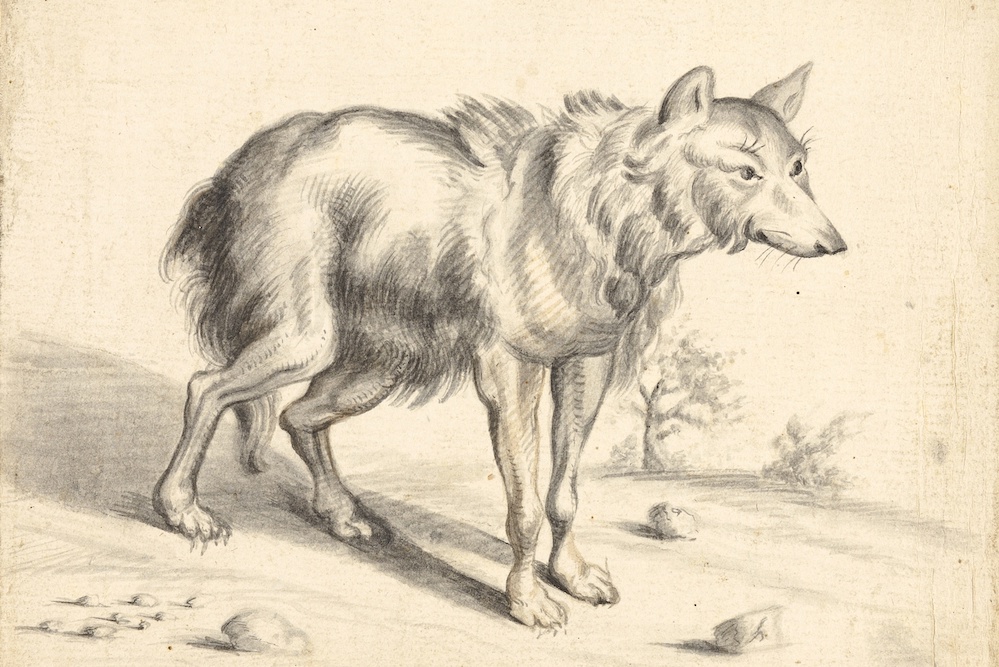
Drawing of a wolf by Jan van Os, 1655. Courtesy of the Art Institute of Chicago.
human body, silver, glass
el Templo de San Francisco, Puebla, Mexico
When Sebastian was told not to give his cloak away—
he was constantly giving away wealth (his last loaf
of bread, a head of lettuce wet with dew,
the final kindness of his plate) and the abbot
was sick of it—Sebastian agreed, you see,
so, he told the beggar he found on the road covered,
as that man was, in a wealth of his own piss
and pinhole scabs that he could not stop him
from talking the cloak by force. The beggar did.
It was his way, Sebastian, I mean. In his youth,
the plague had come for him and his village in Spain.
He alone survived. A wolf came out of the hills
and took from him the tumor that grew inside
his gullet like a vein of liquid gold, like a sign
of what was to come. The wolf burst the tumor—
a bladder of bad wine—lapped the pus, covered
himself with it. He gave it freely, Sebastian did,
to the wolf. It was his generosity that mattered,
you see. Later, even in death, he held his body
close, kept it fresh, for who knew when it might be
needed again. They kept checking, the abbot
and his minions, I mean, in the temple
of San Francisco. His body was waiting. It stayed soft,
incorruptible as gold. A hundred and twenty years
later he was ready when revolution burst
into Mexico, when soldiers tried to lap up
the wealth of the church. They opened
the walls and filled them with holes.
They plundered, they perforated,
and, finding nothing, took a dagger
and opened the body of Sebastian
looking for his golden heart.
Sebastian was ready. He gave them
his insides the way he gave his tumor
to the wolf. He bathed them in his bowels,
blessed them, I mean, with all that richness.



